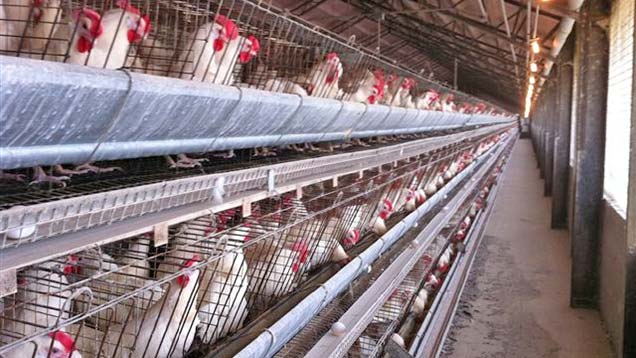US egg prices rise as Californian welfare rules take effect

Egg prices in the USA are on the rise following the introduction of new welfare laws in California.
The so-called Proposition 2 legislation was actually passed in 2008, but only came into effect on 1 January 2015, requiring egg producers in the state to provide enough room in their cages for birds to “stand up, lie down, turn around and spread their wings”.
This is achieved by providing a minimum 116 sq in per bird, up from 67 sq in, leading to an estimated 15% increase in the cost of production.
See also: US hen welfare plan rejected
Some Californian egg producers have chosen to build new sheds that account for the new rules and include cage enrichments, others have elected to go cage-free altogether, while others have simply decided to stock fewer birds in existing structures.
The changes have already led to a contraction in the size of the Californian laying flock – down about 2 or 3 million from a flock of 15 million, according to some estimates.
The tighter supply of eggs has been compounded by a separate piece of legislation, passed in 2010, which bans imports from other states that do not meet California’s standards.
This has triggered a number of legal challenges from other states about the impact on free trade, though these lawsuits have been rejected, except for two, which are still subject to appeals.
Since California, with a population of 39 million people, is less than 70% self-sufficient in eggs, getting enough “CA compliant” eggs is proving a challenge.
Price rises
Prices had already reached record levels in run up to the new rules, with wholesale at about $1.40/doz, compared with $1/doz at the start of November.
According to press reports, grocers are currently charging 35-50% more than last year.
Prices are also being supported nationally by a steady export trade with Mexico, which is in the process of rebuilding its egg business following outbreaks of avian influenza in recent years.
The changes have sparked heated debate about the relative merits of the new legislation.
An editorial leader in the Los Angeles Times applauded Californian voters for being “ahead of the game in voting to better the welfare of California’s hens”.
It urged egg producers to “end their legal challenges and start retrofitting their barns”.
But the National Association of Egg Farmers (NAEF) said the paper was mistaken, pointing to a higher incidence of bone breakages in colony cages and increased feather pecking among chickens in larger groups. Faeces in nest boxes also led to higher levels of pathogens on eggs, it added.
NAEF is a relatively new body, however, and United Egg Producers (UEP), which claims to represent 90% of the country’s egg production, is more supportive of the move in California towards European-style systems.
UEP president Chad Gregory told Poultry World that the supply of eggs in California was “in good shape”.
“We’ll see how the inventory levels develop over the next couple of weeks,” he added.
